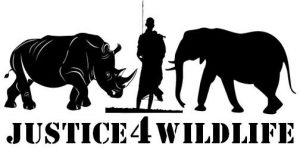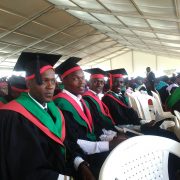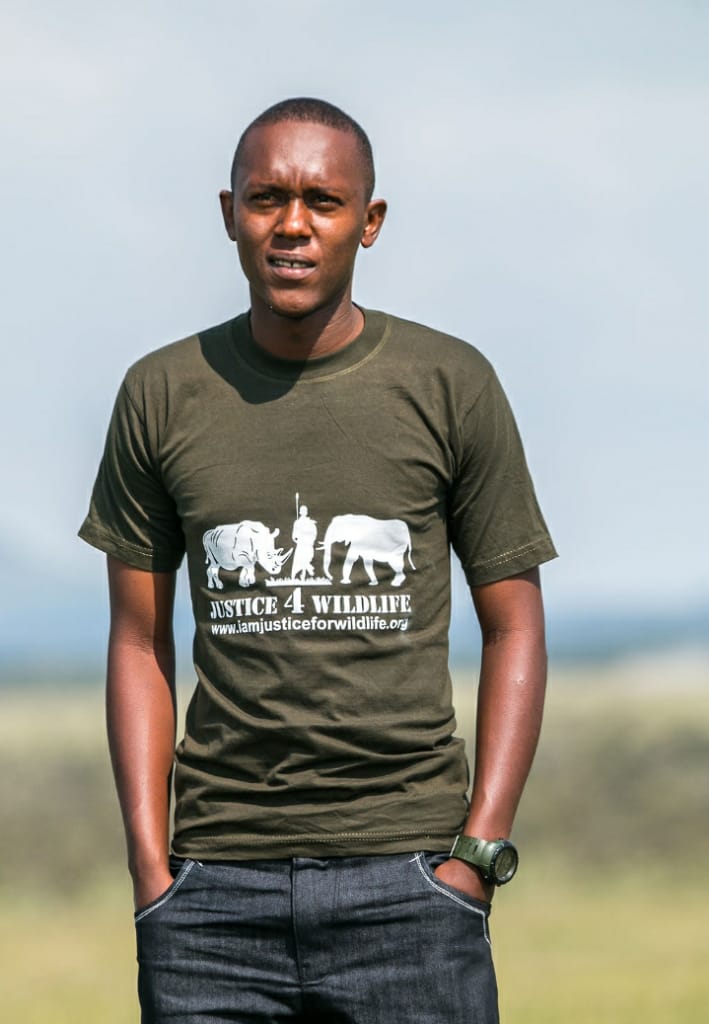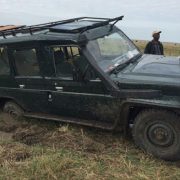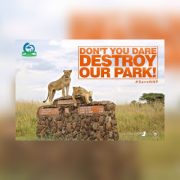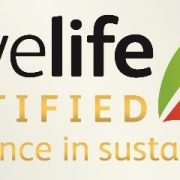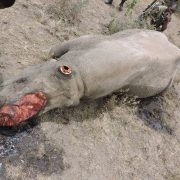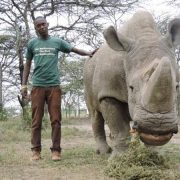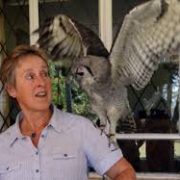- Respect the privacy of the wildlife, this is their habitat.
- Beware of the animals, they are wild and can be unpredictable.
- Don’t crowd the animals or make sudden noises or movements.
- Don’t feed the animals, it upsets their diet and leads to human dependence.
- Keep quiet, noise disturbs the wildlife and may antagonize your fellow visitors.
- Stay in your vehicle at all times, except at designated picnic or walking areas.
- Keep below the maximum speed limit (40 kph/25 mph).
- Never drive off-road, this severely damages the habitat.
- When viewing wildlife keep to a minimum distance of 20 meters and pull to the side of the road so as to allow others to pass.
- Leave no litter and never leave fires unattended or discard burning objects.
- Respect the cultural heritage of Kenya, never take pictures of the local people or their habitat without asking their permission, respect the cultural traditions of Kenya and always dress with decorum.
- Stay over or leave before dusk, visitors must vacate the Park between 6.00 p.m. – 6.00 a.m. unless they are camping overnight. Night game driving is not allowed.
Archive for year: 2018
Are you curious about wildlife blogging, but hesitate to put fingers to keypad? There’s good news! While being a successful blogger takes trial, error and lots of practice, you can get a jump start by learning from others in the business.
Here’s what the judges and entrants of Wildlife Blogger of the Year had to say when we asked for their #1 wildlife blogging tips:
“Don’t start a blog of your own unless you have a lot to say – you’d be better off seeking guest blogs elsewhere if you have a few good ideas. Most blogs fizzle out quite quickly.” Dr Mark Avery, Britain’s premier wildlife blogger and Wildlife Blogger of the Year Judge.
“Vividly describe the animal/s and setting – many people have not seen many wildlife species, and less so in the wild.” Daisy Ouya, science writer and Wildlife Blogger of the Year Judge.
“Be passionate, be authentic. Take responsibility for your words. Don’t regurgitate a field guide. Try to be original in what you write. It doesn’t have to be scientific. Even a serious subject can be positive and empowering.” David Rigden, author of Where Dragons Roam the Earth.
“TYCEYG: Take your camera everywhere you go, but don’t let it distract you! When you are in nature, be present. Pay attention to the way your environment makes you feel.
When you witness wildlife, observe mindfully and snap a photo once you’ve had time to absorb it in real time. When the moment fades away, jot down your emotions and observations. Write down the colors you see, the textures you feel, and any impressions you have from the experience.” Ellie Morgan, author of Heaven in Hells Canyon.
“Tell the truth. However, do it with civility.” Margrit Harris, author of Should I or Shouldn’t I Pet that Cute Lion Cub?
“Write about something that inspired you or had a big impact on you. There is no point writing about something for the sake of it. Write from the heart and let your words flow naturally. That emotion will come across in your writing and people can relive the event with you.
I often speak aloud as I type – as if I am telling a story. I like to keep it colloquial. Don’t be afraid to be yourself – throw humour in there! It often makes a blog more enjoyable, especially if your reader doesn’t necessarily have a wildlife background themselves.” Carolyn Thompson, author of Do you have an Inner Swamp Ogre?
“Get outside and explore. Without being outside you will never have anything to blog about.” Suzanne, author of Manta Rays in the Maldives.
“Don’t copy paste what other people have written. Take your time to understand animal behaviour, you will be surprised there’s so much that has not been documented. Own your stories and don’t do what other people are doing find your own path and master it.” Abraham Njenga, author of Rescuing ‘Bahati’ the elephant calf.
“Make the story personal so your audience can relate to it and feel as if they were experiencing it for themselves. Using emotions to describe how you felt, the highs and lows you went through and pictures/photos can all be very helpful in communicating effectively.” Hiral Naik, author of Breakfast with the blue-crowned motmot.
Do you have other tips for blogging about wildlife that you’d like to share? Please let us know on Facebook: www.facebook.com/
Indigenous or local knowledge refers to a complete body of knowledge, know-how and practices maintained and developed by peoples, generally in rural areas, who have extended histories of interaction with the natural environment. These sets of understandings, interpretations and meanings are part of a cultural complex that encompasses language, naming and classification systems, practices for using resources, ritual, spirituality and worldview. It provides the basis for local-level decision-making about many fundamental aspects of day to day life: for example hunting, fishing, gathering, agriculture and husbandry; food production; water; health; and adaptation to environmental or social change. Non-formal knowledge in contrast to formal knowledge is handed over orally, from generation to generation, and is therefore seldom documented.
It is the dynamic way in which the residents of an area have come to understand themselves in relationship to their environment and how they organize their folk knowledge of flora and fauna, cultural beliefs, and history to enhance their lives The indigenous peoples of Kenya live in areas that are rich in biodiversity. The knowledge of indigenous peoples is often enshrined in rituals, ceremonies and magic, thus underlining how culture, language, religion, psychology and spiritual beliefs cannot often be separated from their understanding of the natural world. This knowledge has passed through generations and assures the survival of the forest environment, its component parts, and the people and cultures dependent upon it and the ecosystem as a whole.
Despite all these positive advantages of indigenous technical knowledge advantages, there are some which are major setbacks to biodiversity conservation, as portrayed through various Kenyan cultures and cultural practices through totems, superstitions, and myths. Some practices promote the killing of wildlife species thus formal knowledge in biodiversity conservation is essential and critical in suitability in that formal education in biodiversity conservation promotes sound cultural practices.
The Kenya government’s efforts to incorporate indigenous knowledge into the formal education curriculum in the post-colonial era has partly been aimed at confronting power, authority, and prestige of western knowledge which subordinates indigenous forms of knowledge in formal schooling. This approach is one of the ways in which the government has tried to empower its citizens to take control of their own development.
Incorporating indigenous knowledge in formal education signifies the recognition of the power of the role of both the individual and collective agency of change that is found in the potential of using multiple forms of knowledge in solving current problems inflicting Kenyan communities. The pluralistic approach to knowledge systems requires that different forms of knowledge and methods be authenticated and embraced in the school system and that no one system is used as a benchmark for other knowledge forms. Yet the integration takes place in the school environment that already privileges western epistemologies against indigenous epistemologies, a condition that continues to create hegemony in Kenya’s school knowledge construction. This has often created contradictions between what is intended by the curriculum reforms and what is actually implemented in classrooms, resulting in incongruence between students’ indigenous experiential knowledge and formal school knowledge.
Therefore, attempts to indigenize the curriculum in Kenya have met with little success and have been implemented superficially. The expansion of western formal education created a situation where traditional education in colonized societies was portrayed by colonial powers as ineffective in managing biodiversity, lives and welfare of colonized peoples and communities.
Teachers’ attitudes toward and beliefs about the value and potential contribution of indigenous knowledge to sustainable development define how they integrate this form of knowledge into the formal school curriculum.
Some of the challenges in the integration of indigenous knowledge in formal education arise from teachers’ lack of faith that such a curriculum can actually contribute significantly to addressing the socio-economic needs of the country. Teachers’ inability to integrate indigenous knowledge in their practice may also be resulting from limited knowledge on what aspects to integrate. Although teachers are entrusted with the responsibility of fostering indigenous knowledge in the learning institutions of Kenya, there is no guidance on what aspects of culture are to be integrated into the curricula.
Although some indigenous knowledge is lost naturally as practices get modified or are left unused for long time periods, the current rate of loss can be attributed to modernization and cultural homogenization. The current educational systems that believe macro-level problems can only be addressed through the global knowledge pool and the slow growth of institution supporting grassroots innovations are also obstacles therefore to avoid more cultural erosion its essential for indigenous knowledge to be integrated into formal education curricula.
Kenya has sound existing research and academic institutions that could potentially play a vital role in promoting, recognizing, developing and protecting indigenous knowledge as well as incorporating it successively with formal education systems within its curriculum. This would water down to the grassroots level, ultimately leading to economic benefits.
Indigenous peoples and local communities have much to contribute to global discussions concerning sustainability and have a right to participate in matters that may affect them. As proponents and practitioners of both biological and cultural diversity and biocultural diversity, indigenous peoples and local communities have unique insights into possible solutions that can promote biodiversity conservation both locally and globally.
“For most of history, man has had to fight nature to survive. In this century he has to realize that in order to survive he has to protect it.” Jacques-Yves Cousteau Here we celebrate the unsung wildlife heroes in the grassroots doing remarkable work to conserve our wildlife heritage, Get to learn about wildlife from a ranger/ ecologist in Kenya a freelance eco-traveler, experience the diverse cultures and African heritage from the natives and take an adventure to new destinations to learn about rare attractions that are hardly talked about and to top it all up some of the best wildlife photographs that will make you reconnect to your wild side appreciate everything around us and fall in love with the natural world, because “It is not enough to love the natural world; the point is to defend and preserve it.” Edward Abbey
Our wildlife, our responsibility. When it comes to standing up for our wildlife it’s better to be outspoken than unspoken.
The numerous driving schools in Kenya have become so commercialized that by the time you get your license and you’re behind the steering wheel the reality of the situation hits you in the face how half-baked you came out from them, I remember how congested the table classes were and don’t get me started on the practical part it was just a formality if you don’t chip in something to the instructor he will brush you very fast and actually most of the time even step in the clutch for you and even engage the gear giving you lame excuses how sloppy you are, calling in the next person as you go to the back of the overcrowded old lorry.
By the time we got to the day for the final road test practical exam at kasarani stadium half the guys were still asking how you get the lorry started, as usually we were quite crowded and had to be brushed off haste-fully only three guys apparently failed the rest of us were certified drivers that was back in 2008 but I believed much hasn’t changed.
As a tour operator driver guide, I get to spend most of my time out in the bush where I have had so many bad experiences which are inevitable to every driver regardless of where you’re driving. We have all been subjected to driving situations that were not catered for in the standard driving test. These situations dictate the future experience and the vulnerability of us the drivers, their passengers and the safety of fellow road users.
Drivers are exposed to varying degrees of challenging situations and many of us are expected to drive vehicles for which we received very little or no training at all. When i heard of how easy it is to enroll at Glen Edmunds performance driving school the only advanced driving company in the African continent whose courses are internationally accredited I knew I had enrolled especially after reading on their website that they give a 90-Day No Questions Asked, Money Back Guarantee I figured these guys must take their work very seriously, and the kind of training that the instructors get cant be compared to any other since this is the only one of its kind in Africa. There are lots of courses to choose from including; Security, Defensive Driving, HGV, 4WD Training, Motor vehicle training, Oil & Gas, Blue light training, Self Defence while Mobile just to mention thus there’s something for everyone, I definitely went for the 4WD off Road Defensive Course.
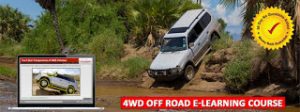
I enrolled and the first order of business was to complete 4WD E-Learning course learning the theory of safe and correct use of a 4WD vehicle in all types of off-road environments which, being a good driver means doing the basics well all the time and this theory part is really essential, you complete at your own pace one I was done with the final exam it automatically generated the completion certificate I knew eligible for the practical session check it out http://elearning.glenedmunds.com
You can either go for the field practical sessions with their vehicles or come with your own, for me I preferred what am used to and went with a land cruiser arrived at their offices and the kind of reception I got made me think of becoming a politician in the next life, after a while everything was in check my martial instructor Amos got in and off we headed out to the 4WD training center where I went through vigorous training components which gave me a clear understanding of the correct and safe use of the four-wheel-drive vehicle in all types of Off Road environments which included; Ascent and Descents with 3 gradients of different difficulty, water obstacles, cross Axel section, Ridges and Ditches, Long track cotton soil and rocky slopes, winch points, instant braking on high speed (my second favorite) but what crowned my experience was the steep Ascent and descents.
You definitely need to find a program that accurately measures your skill levels so that during your re-certification training the instructor is able to quantify your progress and asses which areas need to be improved upon, this courses are quite necessary every 18-24 months. visit their website www.GlenEdmunds.com for more information or call 0725635687

Learn from the experts
If there’s one thing that I am really looking forward to is being behind the wheel in the next Rhino Charge, I have watched and admired the skills that the drivers portray. That’s definitely top on my bucket list
“For most of history, man has had to fight nature to survive. In this century he has to realize that in order to survive he has to protect it.” Jacques-Yves Cousteau Here we celebrate the unsung wildlife heroes in the grassroots doing remarkable work to conserve our wildlife heritage, Get to learn about wildlife from a ranger/ ecologist in Kenya a freelance eco-traveler, experience the diverse cultures and African heritage from the natives and take an adventure to new destinations to learn about rare attractions that are hardly talked about and to top it all up some of the best wildlife photographs that will make you reconnect to your wild side appreciate everything around us and fall in love with the natural world, because “It is not enough to love the natural world; the point is to defend and preserve it.” Edward Abbey
Our wildlife, our responsibility. When it comes to standing up for our wildlife it’s better to be outspoken than unspoken.
Park rules are intended to ensure that visitors enjoy a superior safari experience without endangering themselves or the wildlife. Please respect the rules
“Our lives begin to end the day we become silent about things that matter” Martin Luther King JR. The Nairobi National Park is the only park in the world adjacent to a capital city, this has its ups and downs which we are all familiar to including the standard Gauge Railway that in my opinion had so many alternative routes other than through the park, But there’s one behavior of Nairobians that I really has to be addressed alighting from the vehicles while on a game drive and sitting on top of the vehicle.
The minute you pay to enter the park you’re given a receipt and attached to it is a copy of the park rules and regulations which some people tend to overlook and only oblige when the Kenya Wildlife Service Patrols are around forgetting that they are in the wild and nothing is predictable.
I have been a member of Friends of Nairobi National Park (FONNAP) for years and the commitment of the members who are mostly citizens who are passionate about conservation and protecting the park phenomenal, I joined this What’s App group of FONNAP members who frequent the park and we share pictures that we take in the park and acts as an open forum to discuss any issues of concern but lately the increased numbers of visitors to the park misbehaving has become so common especially during the weekends and public holidays.
We take pictures of such sightings and report to the officers at the gate but really, is it even worth it to risk your riding on top of your vehicle while in the park, walking out to take a selfie in the wild or even sit on the vehicle’s window with you beer cans just to look cool………
Such reckless acts not only compromise the park rules but also environmental ethics. In this scenario, the visitors may be in awe at the sighting of a Lion neglecting their behind to a camouflaged hungry Leopard. When things go south for them they start blaming the authorities asking for compensation and possibly they may go as far as asking the relevant authorities to kill the leopard that mauled their asses. The park is there solely for the reason of protecting and conserving the Leopard and generally the wildlife but after the incident people view the animal as a villain that should be elated. Thus the question every visitor to the park should ask himself before is it worth the risk bear in mind snakes are all over you might get out for a quick snap but end up stepping on one
We seem to have watched so many survivor movies that we all want to star in one but bear in mind this is the real world once you’re into the wilderness nothing is certain, just because there’s no lion in sight doesn’t mean its safe.
Driving off-road in the park is highly prohibited, use of drones is very much illegal but still, some people think they can get away with it. Be warned its not only the KWS patrols that you should be looking out for it you fall in the category of these delinquents who think that the park is their playground FONNAP members are always in the park at any given time the gates are open so no more monkey business.
Become a friend of the park, if you see park rules being broken, Please don’t just drive by taking a minute to take to them and remind them if they don’t heed feel free to take take a photograph of the incident and share with the KWS officers at the gate. because we have a unique status among all things on the planet and morality only applies to us.
The wildlife code
“For most of history, man has had to fight nature to survive. In this century he has to realize that in order to survive he has to protect it.” Jacques-Yves Cousteau Here we celebrate the unsung wildlife heroes in the grassroots doing remarkable work to conserve our wildlife heritage, Get to learn about wildlife from a ranger/ ecologist in Kenya a freelance eco-traveler, experience the diverse cultures and African heritage from the natives and take an adventure to new destinations to learn about rare attractions that are hardly talked about and to top it all up some of the best wildlife photographs that will make you reconnect to your wild side appreciate everything around us and fall in love with the natural world, because “It is not enough to love the natural world; the point is to defend and preserve it.” Edward Abbey
Our wildlife, our responsibility. When it comes to standing up for our wildlife it’s better to be outspoken than unspoken.
Twiga Tours Becomes the First Tour Operator in East Africa to attain Tourism Sustainability Certification Status
Nairobi, November 16, 2018. The Travelife Certified award was received today by Twiga Car Hire & Tours. The award recognizes the long-term efforts and frontrunner position of Twiga Tours regarding sustainability and Corporate Social Responsibility.
Twiga Car Hire & Tours complies with more than 200 criteria, related to an operator’s office management, product range, international business partners and customer information. The Travelife standard is covering the ISO 26000 Corporate Social Responsibility themes, including environment, biodiversity, human rights and labour relations; and is Accredited by the Global Sustainable Tourism Council as in compliance with the GSTC criteria and certification procedures.
Twiga Car Hire & Tours is the first company in Kenya to have obtained the Travelife Certified award.
Mr Naut Kusters, manager of Travelife for tour operators, “I am delighted to see that sustainability in the tour operators sector is obtaining momentum. The award of the front-runner Twiga Car Hire & Tours will inspire other companies in Kenya to follow the same path”.
Travelife is the leading international sustainability certification for the travel sector. More than 35 national travel associations are promoting the scheme to their members including, KATO (Kenyan Association of Tour operators), ABTA, The British Travel Association and PATA, the Pacific Asian Travel Association.
In Kenya, Travelife works in close partnership with Ecotourism Kenya, who is managing the customized scheme. Jointly, Travelife, Ecotourism Kenya and KATO are presently implementing an EU funded initiative (Green Tour Kenya) to work towards a sustainable travel sector in Kenya. The project aims to support more than 100 KATO members in the adaptation of common sustainability standards.
Mr. Fred Kaigua, KATO CEO, “Twiga Car Hire & Tours is a Category “A” member of KATO and we are happy to note the effort they have made towards achieving this award. We trust that this recognition will inspire other companies to follow suit.
Mrs. Grace Nderitu, Ecotourism Kenya CEO, “The award of sustainable tourism certification to Twiga Tours marks a major milestone for the tourism industry in Kenya. The tour operators certification complements the eco-rating certification standard for accommodation facilities and jointly work to give an assurance that Kenya’s tourism is sustainable”.
About Travelife (www.travelife.org)
Travelife is a certification system, dedicated to achieving sustainable practices within the tourism industry. It provides companies with realistic sustainability goals, tools, and solutions to implement positive change within their businesses and supply chains. Travelife is managed by ABTA – The Travel Association in the UK – and by ECEAT Projects – a not-for-profit organization based in The Netherlands.
Travelife for Tour operators and Travel agents: the scheme provides online training and practical tools for sustainability management and certification. The training and online tools are suitable for tour operators and travel agencies of any size and cover all management aspects of the travel company business including office operations, the supply chain, destinations and consumers. Upon submitting a report in compliance with the Travelife standard (based on an independent onsite audit), the company can obtain the “Travelife Certified” status.
The Travelife standard for Tour operators and Travel agencies is based upon the full Corporate Social Responsibility themes, including labor conditions, human rights, environment, biodiversity and fair business practices. The management requirements are compatible with EMAS and ISO 14001. The system is supported by more than 35 national travel associations to further its implementation among members
About Ecotourism Kenya
Ecotourism Kenya is a business membership association directly serving more than 350 members, and reaching out to hundreds more in Kenya. Since its inception in 1996 Ecotourism Kenya has been involved in a wide range of activities to promote and broaden the industry understanding of sustainable tourism, and attract membership beyond the mainstream tourism industry. Ecotourism Kenya has had many firsts: it was the first Ecotourism Society in Africa; the first to develop a voluntary eco-certification scheme for hotels/lodges in Africa, the first to publish a Green Directory of producers of green products and services, the first to develop a customized sustainability standard for Tour Operators in E. Africa and the first to develop Green Destination Guidelines in Africa. For further read, visit our website http://ecotourismkenya.org/
“For most of history, man has had to fight nature to survive. In this century he has to realize that in order to survive he has to protect it.” Jacques-Yves Cousteau Here we celebrate the unsung wildlife heroes in the grassroots doing remarkable work to conserve our wildlife heritage, Get to learn about wildlife from a ranger/ ecologist in Kenya a freelance eco-traveler, experience the diverse cultures and African heritage from the natives and take an adventure to new destinations to learn about rare attractions that are hardly talked about and to top it all up some of the best wildlife photographs that will make you reconnect to your wild side appreciate everything around us and fall in love with the natural world, because “It is not enough to love the natural world; the point is to defend and preserve it.” Edward Abbey
Our wildlife, our responsibility. When it comes to standing up for our wildlife it’s better to be outspoken than unspoken.
China has lifted a quarter-century ban in the trade in Rhino horn apparently for scientific and “medicinal” use of the rhinoceros horn. China state council must be celebrating at the moment while I wonder if the world declares that their treasured Panda also has medicinal value same as the tigers parts they have allowed to be traded on probably they would feel the pain that conservationists in Africa (other than the South Africans who farm white rhinos to crop off their horns) are feeling.
The rhino horn is primarily made up of keratin, the same substance that makes up our hair and fingernails but has been associated with westerners myths, that white rhino is used mainly by the Chinese as an aphrodisiac and to treat flu and convulsions.
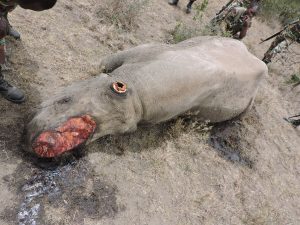
Rhino horn costs around $65,000 per KG making it more valuable than gold and many times more valuable than ivory
In 2016 China banned the sale of Ivory thus reducing the ivory trade only to lift the ban of 1993 in Rhino horn that is said to allow tiger and rhino parts to be used for medicinal and scientific research and cultural exchanges underscoring that the trade will be “Strictly controlled” and the products must come from animals in captivity which will definitely further threaten the survival of especially black rhinos which are critically endangered especially here in Kenya, and just to drive the point home there’s no physical difference to tell apart between a rhino horn bred in the wild and that from captivity.
Opening the trade and creating the demand for the ready market will definitely place pressure on supply, risking sourcing moving beyond farmed white rhinos in South Africa to the remaining endangered population especially on black rhinos here in Kenya.
It’s about time that we local Africans the custodians of our unique wildlife heritage take a genuine stand in conserving our rhninos for posperity because we are the same culprits who will shoot down these magnificent iconic species to earn a few coin, its also about time that consumers of endangered species products understand that the decisions they make buying of this wildlife products to impress someone affects the lives of ordinary people thousands of miles away in countries they may never visit.
Only when the buying stops, the killing can too. “To love all animals is to love all life,to love all life is to be rooted in your spirituality” April Peerless
“For most of history, man has had to fight nature to survive. In this century he has to realize that in order to survive he has to protect it.” Jacques-Yves Cousteau Here we celebrate the unsung wildlife heroes in the grassroots doing remarkable work to conserve our wildlife heritage, Get to learn about wildlife from a ranger/ ecologist in Kenya a freelance eco-traveler, experience the diverse cultures and African heritage from the natives and take an adventure to new destinations to learn about rare attractions that are hardly talked about and to top it all up some of the best wildlife photographs that will make you reconnect to your wild side appreciate everything around us and fall in love with the natural world, because “It is not enough to love the natural world; the point is to defend and preserve it.” Edward Abbey
Our wildlife, our responsibility. When it comes to standing up for our wildlife it’s better to be outspoken than unspoken.
The first time the full impact of the reality of the plight of the Northern White Rhinos was on a documentary “OL Pejeta Diaries” I was aware before on their decline but the magnitude of their extinction closing in this fast, its such a shame on humanity.
The sole threat to Rhinos is human greed! Rhino populations are facing serious threats from illegal trade, primarily poaching for ‘traditional medicine” from some far East countries, habitat loss and political conflicts, Humans have been the main driver of the population’s decline,
The first time I meet up with Sudan was during an educational field trip while in campus, I was excited and anxious to meet him but after I heard of his story from his keeper James Mwenda who know happens to be a very close friend of mine, I literally broke down, White Rhinos are social, friendly and have a charismatic charm in them that you can even pet and have a close picture with them as you pet their backs “only those in semi-captive environments and that are used to being in close contact with humans’ don’t you dare try this in the wild while on a game drive.
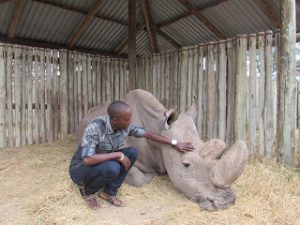
The gentle Sudan February 2018
“We cannot be the generation that wipes out Rhinos”
The northern white rhinoceros, or northern square-lipped rhinoceros (Ceratotherium simum cottoni), is one of the two subspecies of the white rhinoceros. Formerly found in several countries in East and Central Africa south of the Sahara, it is listed as Critically Endangered. This subspecies is a grazer in grasslands and savanna woodlands. As of November 2015, there are only three rhinos of this subspecies left. They all belong to the Dvůr Králové Zoo in the Czech Republic but live in the Ol Pejeta Conservancy in Kenya and are protected round-the-clock by armed guards.
HOW DID WE GET HERE??
The zoo population is declining, and northern whites have rarely reproduced in captivity. There are now only three northern white rhinos left. They all belong to the Dvůr Králové Zoo in the Czech Republic but were transported to Ol Pejeta Conservancy in Kenya, Africa.They arrived at the conservancy after an air and road trip on 20 December 2009.
The three rhinos (1 male and 2 female), under constant watch by specialists and staff, lived in specially constructed bomas with access to a 400×400-metre paddock area, allowing them to acclimatize to their new surroundings.
These three are:
- Sudan, a 45-year-old male (as of 2018), who was caught from the wild in Sudan at 3 years old.
- Najin, a female, was born in captivity in 1989. She is Suni’s half-sister and mother of Fatu.
- Fatu, a female, was born in captivity in 2000. She is the daughter of Najin.
To prevent any unnecessary injuries they might inflict on each other while interacting in their fenced area, and give their horns an opportunity to regrow to a natural shape (as their front horns had grown bent by much rubbing against enclosure bars in captivity), all three rhinos were sedated and their horns were sawn off. This also made them less vulnerable to the poaching that drove their species to near extinction, as the horn is what the poachers are after. In place of their horns, radio transmitters have been installed to allow closer monitoring of their whereabouts. They are protected round-the-clock by armed guards. Poachers have been selling their horns for $50,000 per kilo.
Since May 2010, the northern white rhino male Sudan was moved from the initial holding pens to a much larger 700-acre (2.8 km2) semi-wild enclosure. There he roams among many African animals, including several southern white rhino females and many plains animals. On 26 October 2011, the females were coaxed into the larger enclosure. Because Najin was overly protective of her daughter Fatu’s chance at mating, one of the two moved back into the smaller enclosure two weeks later.
Until 2011, the progress of this attempt at saving the northern white rhinoceros was documented on the initiative’s website; and their life in Ol Pejeta Conservancy is commented on the Conservancy’s website. Several documentaries are in the works, including an episode of Ol Pejeta Diaries entitled “Return of the African Titans” for Oasis HD Canada fall 2010, and a follow-up half-hour episode to follow. This translocation is also the subject of a BBC Last Chance to See special entitled “Return of the Rhino,“ presented by Stephen Fry and the zoologist Mark Carwardine; the TV program reported at the end that the two pairs of rhinos were “flirting.”
On 25 April 2012 and on 27 May 2012 Suni and Najin mated. Pregnancy of the female rhinos was monitored weekly. gestation period takes 16 to 18 months, so in January 2014 the Conservancy considered Najin not pregnant, and a male southern white rhino from Lewa Wildlife Conservancy was put to Najin and Fatu enclosure in Ol Pejeta to at least intercross the subspecies. To achieve this, both female northern white rhinos were separated from their male counterparts, which prevents them, for the time being, from producing a pure northern white rhino offspring. In 2015, however, a test conducted by Czech specialists revealed that neither of the females is “capable of natural reproduction”.
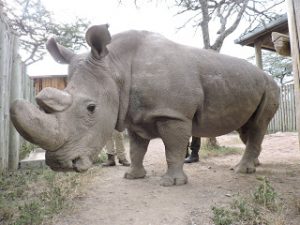
At the end of 2015, scientists from the Leibniz Institute for Zoo and Wildlife Research, San Diego Zoo Global, Tiergarten Schönbrunn and Dvůr Králové Zoo developed a plan to reproduce northern white rhinos using natural gametes of the living rhinos and induced pluripotent stem cells. Subsequently, in the future, it might be possible to specifically mature the cells into specific cells such as neurons and muscle cells, in a similar way in which Katsuhiko Hayashi has grown mice out of simple skin cells. The DNA of a dozen northern white rhinos has been preserved in genetic banks in Berlin and San Diego.
In 2017, Ol Pejeta Conservancy teamed up with Tinder to launch a fundraising campaign in order to recover this species. Therefore, they created a Tinder account for Sudan, the last standing male of northern white rhinos, and the app’s users could swipe right to make their donations for the development of breeding methods
The biological clock is ticking, as this species is at the brink of #extinction he is carrying the fate of his species. Humans are 100 percent to blame for what’s happened to the rhino populations across the planet, rhino horn is worth more than cocaine in the far East #iworry #killthetrade #killthemarket #killthedemand #rhinohorn has no medicinal value it’s made primarily of keratin same as our fingernails
THE LAST MALE NORTHERN WHITE RHINO DIES
Monday, March 19th, 2018- Sudan passed on at age 45 while being treated for age-related complications that led to degenerative changes in muscles and bones combined with extensive skin wounds, he was unable to stand up and was suffering a great deal the veterinary team from Dvur Kralove Zoo, Ol Pejeta and Kenya Wildlife Service made the decision to euthanize him.
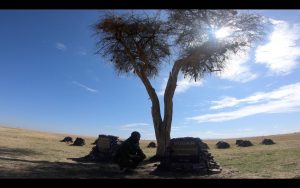
In memory of Sudan
https://g.co/kgs/wB8VUA
“For most of history, man has had to fight nature to survive. In this century he has to realize that in order to survive he has to protect it.” Jacques-Yves Cousteau Here we celebrate the unsung wildlife heroes in the grassroots doing remarkable work to conserve our wildlife heritage, Get to learn about wildlife from a ranger/ ecologist in Kenya a freelance eco-traveler, experience the diverse cultures and African heritage from the natives and take an adventure to new destinations to learn about rare attractions that are hardly talked about and to top it all up some of the best wildlife photographs that will make you reconnect to your wild side appreciate everything around us and fall in love with the natural world, because “It is not enough to love the natural world; the point is to defend and preserve it.” Edward Abbey
Our wildlife, our responsibility. When it comes to standing up for our wildlife it’s better to be outspoken than unspoken.
Saving owls in a country that believe them to be harbingers of death seems impossible. But the Naivasha Owl Centre, founded in 2014, not only rescues and rehabilitates owls but Kenya’s biggest and most bellicose birds of prey the late Sarah Higgins, Simon Thomsett, and Shiv Kapila, against all odds, set up the Centre and have successfully handled over 190 birds.
Throughout history and across many cultures, people have regarded Owls with fascination and awe. Few other creatures have so many different and contradictory beliefs about them. Owls have been both feared and venerated, despised and admired, considered wise and foolish, and associated with witchcraft and medicine, the weather, birth, and death. Speculation about Owls began in earliest folklore, too long ago to date, but passed down by word of mouth over generations.

Come to get up close with an Owl
In my culture, it was believed that owls were harbingers of death. If one saw an owl or heard its hoot, someone was going to die. In general, owls are viewed as harbingers of bad luck, ill health, or death. The belief is widespread even today, across various cultures and communities in Africa the story is quite similar and it’s going to take a while to change.
But owl mythology is very important today, especially to conservationists, because of myths and beliefs about
owls play a major role in the killing of owls today, especially in regions where the owl is considered evil
WHAT IT TAKES TO RESCUE RAPTORS
This all started back in 1986 with a little Barn Owl called Full stop. Sarah used to talk fondly of the first encounter with a giggling smile, He was brought to Sarah Higgins house in Naivasha with a badly damaged wing. When the vet said he could mend the bones but the bird would never fly properly again. Sarah build an owlery. From then, people started bringing in injured, sick and orphaned owls. And from there branched into treating raptors like eagles, kites and vultures, and other large birds such as pelicans and stocks.
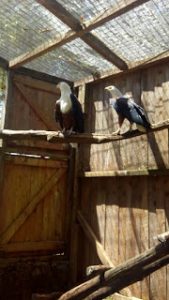
Rescued fish Eagles
In 2014 Sarah, Simon Thomsett and Shiv kapila got together and formalized the Centre under a trust now known as the Kenya Birds of Prey trust.
The aim of the Trust is to rehabilitate all birds into the wild. The vet treats them, operates if necessary, and they stay there until they are fully recovered. There are a series of stages that birds pass through while they’re in their care, starting with treatment in the clinic and progressing to larger cages in which they can fly. They end up being trained in the rehabilitation area using falconry techniques.
It’s no easy job especially when it comes to releasing them due diligence has to be done, otherwise, it can be considered abandonment and neglect. These birds need to hunt and defend their territory to survive. The Trust’s falconers work with them, training them to hunt with the skill they’ll need to make a life for themselves.
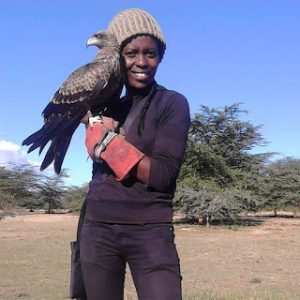
Come meet Caro the First female falconer in East Africa
The Naivasha Owl Centre currently hosts 23 owls, 18 raptors (including three Crown Eagles), a vulture and two Marabou and Several of these will have to remain at the Centre but the majority will eventually be released once they have been brought back to total fitness. In many cases, falconry techniques are used to get them fit, as an unfit bird won’t be able to catch its food and will thus starve to death.
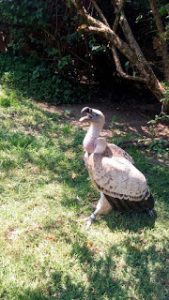
Rescued Vulture
The late Sarah Higgins lived on the shores of Lake Naivasha in Kenya’s Rift Valley, where she run a rescue Centre for owls and raptors, The Naivasha Owl Centre is one of the two arms of The Kenya Bird of Prey Trust. The Centre’s clinic is currently in need of medical equipment and the Centre would also like to build improved accommodation for the birds.
Please support her legacy, if you would like to donate, please do so through the Kenya Bird of Prey Trust, PO Box 358, Naivasha 20117 or you can email naivashaowls@gmail.com or visit
Website: www.naivashaowls.org for more information
I have been a regular visitor to the trust over the years and the amount of work the dedicated team carries out on a daily basis is phenomenal and outstanding, its actually open for the public feel free to walk in given that its conveniently located along the Moi south lake road next to the Lake Naivasha country club, a stone throw away from Karagita center, You can actually get a rare opportunity to hold an Owl see the beauty of the magnificent birds, it goes a long way into changing people’s perceptions of the species and actually their doors are always open for school groups they get to have a lecture on owls by the experienced falconers

Owl challenge, visit the rescue center tell us about your experience and don’t forget to send us a photo posing with an owl
“For most of history, man has had to fight nature to survive. In this century he has to realize that in order to survive he has to protect it.” Jacques-Yves Cousteau Here we celebrate the unsung wildlife heroes in the grassroots doing remarkable work to conserve our wildlife heritage, Get to learn about wildlife from a ranger/ ecologist in Kenya a freelance eco-traveler, experience the diverse cultures and African heritage from the natives and take an adventure to new destinations to learn about rare attractions that are hardly talked about and to top it all up some of the best wildlife photographs that will make you reconnect to your wild side appreciate everything around us and fall in love with the natural world, because “It is not enough to love the natural world; the point is to defend and preserve it.” Edward Abbey
Our wildlife, our responsibility. When it comes to standing up for our wildlife it’s better to be outspoken than unspoken.
